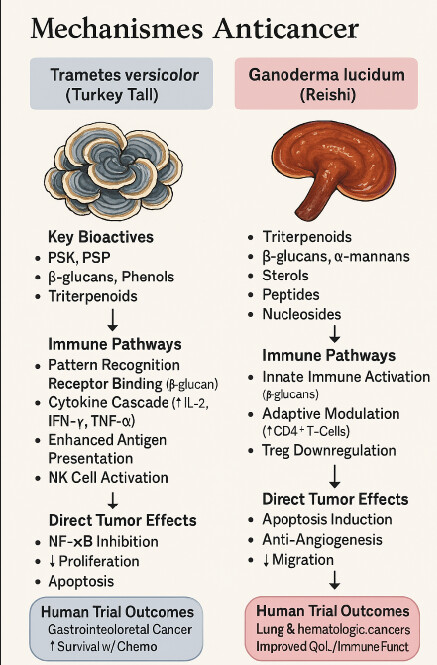An abortion drug for breast cancer is being blocked by moral and political interests
A group of experts says that conservative politics have hampered research on mifepristone. ‘It’s scary to investigate it and look pro-abortion’
On December 1, 2006, the journal Science flagged up a promising development. “In the future, perhaps, drugs can be used to prevent breast cancer,” the article predicted. Almost 20 years later, that hasn’t happened. The ‘maybes’ in scientific journals should be written in capital letters. Science advances slowly and there are many obstacles in its path: lack of funding, errors, dead ends… But in this case, the research has also been impeded by moral prejudice and political bias.
The drug Science was talking about is called mifepristone and is used to induce abortions. And this is a problem. “It’s scary to investigate it and look pro-abortion,” Swedish researcher Kristina Gemzell Danielsson, from the Karolinska Institutet, explains. Danielsson is one of the signatories of a recent editorial published in The Lancet denouncing the situation. “We have very promising data, but no efforts are being made to continue with the research,” she explains. “Mifepristone is also extremely expensive to use for research and the regulatory hurdles are absurd, probably because it is associated with induced abortion.”
Squelching Progesterone’s Signal May Prevent Breast Cancer
Lee’s team also showed that mifepristone, a drug that induces abortions by inhibiting the progesterone receptor, blocks the development of mammary tumors in mice that have had the rodent version of BRCA1 inactivated in their mammary glands. “The paper has a mechanism [of BRCA1 activity] and has clinical implications. It’s potentially important,” says Eliot Rosen of Georgetown University School of Medicine in Washington, D.C., who is also studying the interaction between BRCA1 and progesterone.
Read the full article:
https://www.science.org/doi/10.1126/science.314.5804.1370
The potential role of mifepristone in breast cancer prevention: beyond medical abortion
Breast cancer is the leading cause of cancer-related deaths among women globally. Yet, current management strategies emphasise detection and treatment over primary prevention. For groups at high risk of breast cancer, such as carriers of BRCA1 or BRCA2 pathogenic variants, salpingo-oophorectomy and mastectomy are risk-reducing surgical options, but these approaches affect quality of life and evidence for a mortality benefit is sparse. Non-surgical treatments, such as selective oestrogen receptor modulators, have low efficacy against breast cancers with poor prognosis (eg, triple-negative cancers), and toxicity can often lead to poor adherence. Emerging evidence indicates that progesterone plays a part in breast carcinogenesis, particularly in carriers of BRCA1 pathogenic variants. Mifepristone, a selective progesterone receptor modulator, has shown potential to reduce breast epithelial proliferation. However, the association of this drug with medical abortion, besides long-standing availability and patent restrictions, has hindered its development for breast cancer prevention. Regulatory, political, and legal barriers, along with minimal pharmaceutical investment, have further restricted research. Collaborative efforts are needed to accelerate research on mifepristone as a non-surgical risk-reducing option. Overcoming current barriers is essential to expand prevention strategies, particularly for women at high risk of breast cancer worldwide.
https://www.thelancet.com/journals/lanogw/article/PIIS3050-5038(25)00013-5/abstract
ChatGPT:
Identify the research papers that suggest that mifepristone may be helpful against breast cancer
Here’s a concise, citation-backed list of peer-reviewed papers (plus a few registered trials) that have reported signals suggesting mifepristone (RU-486) could be helpful against breast cancer—either directly as an anti-tumor agent or by enhancing other therapies.
Clinical and translational studies in humans
-
MIPRA trial (biomarker-selected neoadjuvant study).
Single-arm window-of-opportunity trial showing Ki-67 reductions and molecular responses to short-course mifepristone in patients whose tumors had a high PR-A:PR-B isoform ratio (PRA-H)—supporting antiprogestins in a selected subset. (PMC)
-
Randomized phase I (nab-paclitaxel ± mifepristone) in advanced breast cancer.
Demonstrated feasibility and signals of activity (including complete and partial responses) when pretreating with mifepristone; rationale was glucocorticoid receptor (GR) antagonism to overcome chemo-resistance. (PMC)
-
Randomized phase II (nab-paclitaxel ± mifepristone) in advanced TNBC.
Under-accrued study; no PFS benefit overall, but responders were seen and authors note the need for biomarker-driven selection for GR/PR targeting. Useful as context for where mifepristone may (or may not) help. (PMC)
-
Single-agent phase II in metastatic PR-positive disease (1990s).
Early trials of mifepristone (and related antiprogestins) in metastatic breast cancer reported modest activity in small cohorts—important historically for the antiprogestin concept. (PubMed)
-
Short-term exposure study in healthy/premenopausal women.
50 mg/day mifepristone for 3 months reduced breast epithelial proliferation (Ki-67), a prevention-relevant endpoint. (Oxford Academic)
-
Case reports suggesting benefit.
Isolated reports describe marked clinical responses with mifepristone, including a complete remission after short exposure; these are hypothesis-generating only. (IIAR Journals)
Preclinical/mechanistic work underpinning benefit
-
GR antagonism as a strategy in TNBC.
Foundational lab paper showing that mifepristone blocks GR-mediated pro-survival signaling and enhances taxane-induced apoptosis in GR-positive triple-negative models—providing the mechanistic basis for clinical combinations.
-
TNBC xenograft study (Theranostics).
Additional in-vivo work supporting mifepristone’s anti-proliferative and anti-metastatic effects in TNBC models. (PMC)
Ongoing/related clinical efforts (context)
-
Pembrolizumab + mifepristone (HER2-negative metastatic breast cancer).
Phase II trial exploring GR blockade with immunotherapy; abstracted results presented (safety/efficacy signals). (ASCO Publications, ClinicalTrials.gov, Cancer.gov)
-
Enzalutamide ± mifepristone vs. physician’s choice in AR-expressing disease.
A current phase II design testing whether adding mifepristone can improve outcomes; included here to show how investigators are operationalizing the hypothesis. (ClinicalTrials.gov, Cancer.gov)
How to read this evidence
- The strongest positive human signal so far is biomarker-selected (PRA-H in the MIPRA study).
- Attempts to use mifepristone broadly (e.g., unselected TNBC with nab-paclitaxel) have not yet shown clear PFS benefit, reinforcing the need for selection by PR isoforms and/or GR activity. (PMC)
If you want, I can filter these into a mini-bibliography (APA/AMA) or pull out key data (dose, schedule, endpoints, effect sizes) for the papers most relevant to your use case.
